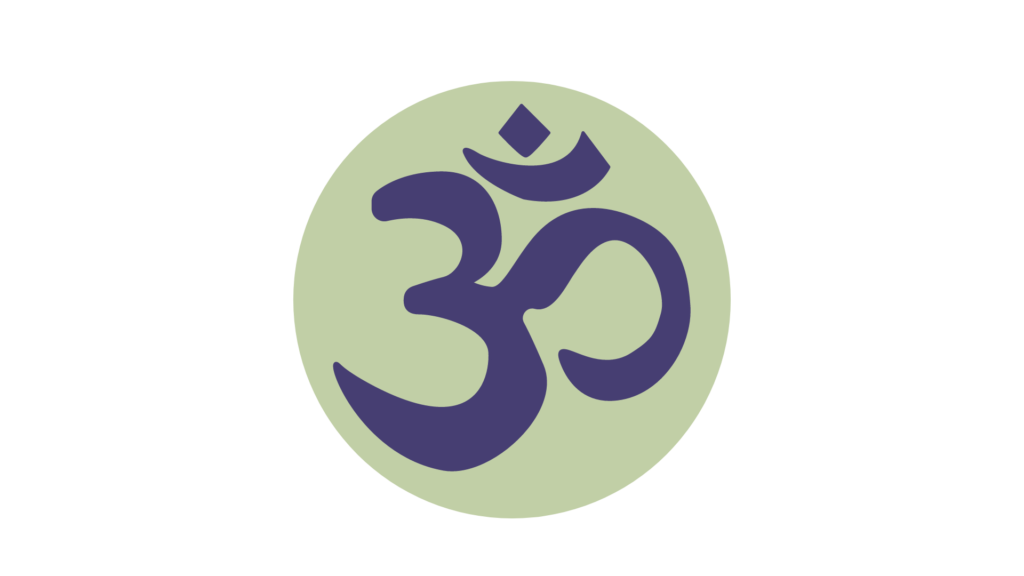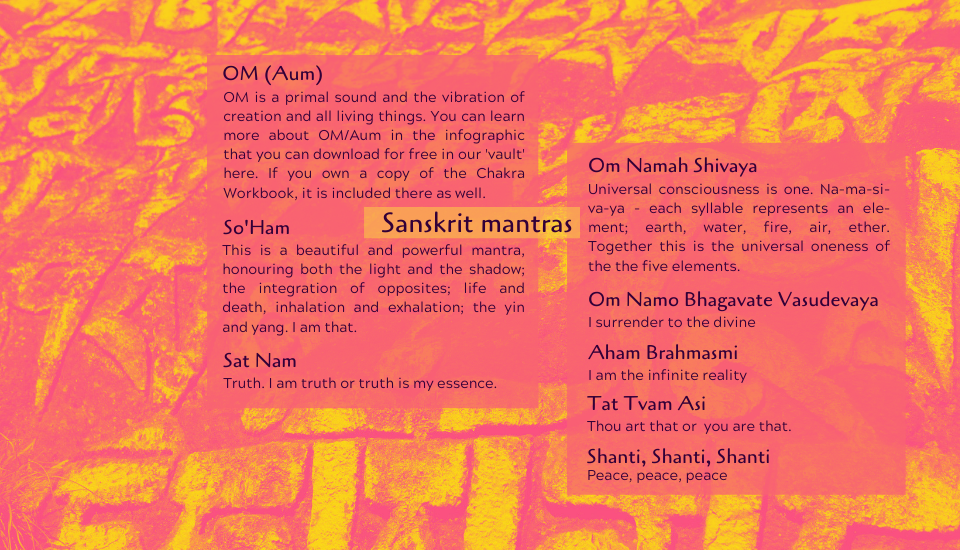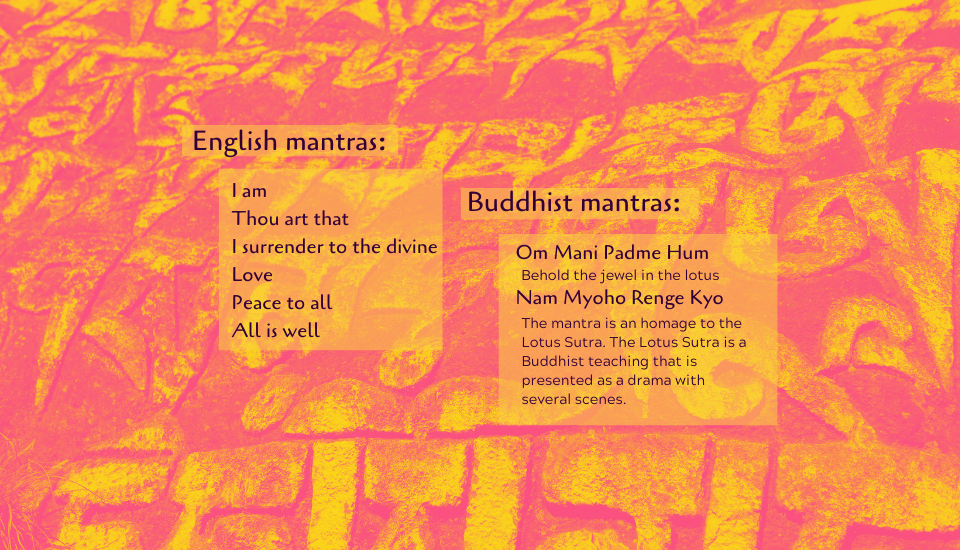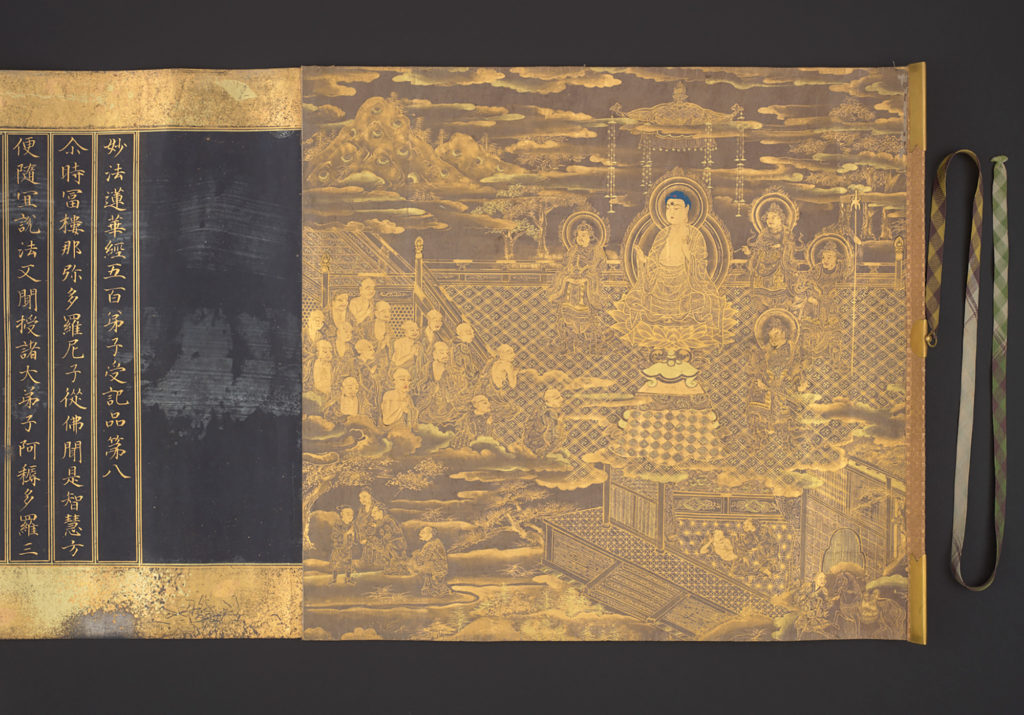Why mantra meditation?
Mantra meditation is a meditation technique that uses sound to open the heart and quiet the mind. Mantra meditation allows your mind to focus and concentrate clearing away other thoughts, emotions and distractions that can divert your energies. This technique helps the practitioner to become more aware of their own mental and emotional energy states. It supports and enables one to develop direction and focus on our actions off the meditation mat. Other basic benefits include:
- Helping us to become more aware of the simpler aspects of life. Transforming previous attitudes towards an uncomplicated and non-competitive life.
- Creating a balance of being physically active and capable with your external actions.
- Maintaining a condition of perpetual meditation internally.
Mantras (sounds) can be whatever you choose; they do not need to be Sanskrit Mantras. A mantra is a sound you repeat, again and again, until it becomes one in your consciousness freeing your mind from its regular doing. Repetition of your chosen mantra, ultimately, will elevate you to an altered state of awareness known as transcendence; connecting your soul or higher-self to the ineffable the greater consciousness.
With mantra meditation, one can use whatever sound one likes. You can do something as simple as repeating “I am” during inhalation, and “at peace” on the exhalation. Frequently, this form of meditation is taught using Sanskrit words or phrases. There are numerous mantras and you can learn a lot about them in an in-depth and wonderful book by Dr David Frawley, entitled Mantra Yoga and Primal Sound: Secrets of Seed (Bija) Mantras.
Methods of repetition:
There are four methods of repetition:
- Baikhari – reciting the mantra aloud to move unwanted thoughts. This is especially useful in stabilizing patterns of consciousness when the mind is disturbed or highly distracted.
- Upanshu – reciting the mantra in a low voice that only the practitioner can hear.
- Manasika – repetition of the mantra mentally or silently to oneself with no movement of the lips or tongue, no vibration in the throat.
- Ajapa – silence – constant awareness of the mantra, or of what it represents without the mental effort of normally needed to repeat the mantra.
Common mantras:
Sanskrit mantras:

AUM/OM
OM is a primal sound and the vibration of creation and all living things. You can learn more about OM/Aum in the infographic that you can download for free in our ‘vault’ here. If you own a copy of the Chakra Workbook, it is included there as well.
So’Ham
This is a beautiful and powerful mantra, honouring both the light and the shadow; the integration of opposites; life and death, inhalation and exhalation; the yin and yang. I am that.
Sat Nam
Truth. I am truth or truth is my essence.
Om Namo Bhagavate Vasudevaya
I surrender to the divine.
Tat Tvam Asi
Thou art that or you are that.
Om Namah Shivya
Universal consciousness is one. Na-ma-si-va-ya – each syllable represents an element; earth, water, fire, air, ether. Together this is the universal oneness of the the five elements.
Aham Brahmasmi
I am the infinite reality.
Shanti, Shanti, Shanti
Peace. Peace. Peace.


English Mantras
I am.
Thou art that.
I surrender to the divine.
Love.
Peace to all.
All is well.
Buddhist Mantras
Om Mani Padme Hum
Behold the jewel in the lotus
Nam Myoho Renge Kyo
The mantra is an homage to the Lotus Sutra. The Lotus Sutra is a Buddhist teaching that is presented as a drama with several scenes.

c. 1636, Japan is held in the British Library)
The LOTUS SUTRA is available for free to anyone to download and read in flipbook format here.
Here’s How To
Preparation for Mantra Meditation
It is always important to prepare yourself before doing mantra meditation or any form of meditation. Getting yourself in the right mindset and setting a spiritual atmosphere will help you in your meditation practice. The best time to practice is before you start your day or during a time you regularly take a break from your schedule daily. You don’t need special items or even a cushion to practice meditation, although comfort will minimize distractions.
Here are a few tips to help you get started and in the end a few more suggestions but they are not necessities. The only thing you truly need is a willingness to practice.
Some tips but not necessities –
- Surrender your ego. This practice is about purifying yourself and letting go of preconceived ideas, and opening yourself to boundless, unconditional love –Divine Grace.
- Sit in a comfortable position which allows your spine to be straight and erect.
- Let a sense of spirituality and enthusiasm for your inner quest fill you. If possible, shower and dress – a comfortable and clean body promote a clear mind as well.
- If you have a dedicated place or sacred space you have set aside for your spiritual practice, sit there. If not, no worries. Find a comfortable seat where you are least likely to be disturbed
- Create a simple altar for your space. You can place inspirational pictures there or, light a candle, or some incense to keep the air sweet and the atmosphere meditative.
How to do mantra meditation:
If you have chosen a one-syllable mantra such as OM begin by concentrating on the rhythm of your breath. Inhale, then as you exhale repeat OM either mentally in your mind or aloud, counting is optional. Inhale and exhale OM, inhale and exhale OM, and so on.
For longer mantras such as the Mantra, So Hum, begin with deep, relaxed breathing, calming the mind and the body. Deeply connect to the rhythm and absorb the rhythm of the breath. On the inhalation, mentally repeat So, and on the exhalation, mentally repeat Hum. Flow with the silent sound and breath, and allowing the sound to become one with your consciousness, visualizing life force energy moving into your body and down your spine when you inhale, and energy flowing up the spine when you exhale.
Enjoy the practice of this mantra technique without expectation. There is no need to achieve anything. Enjoy the process and in time your breath and Mantra will become one.
If you want to learn more about mantra meditation or other meditation techniques you can take private or group lessons at the Mindful Soul Center with Amy: contact her at amy@themindfulsoulcenter.com.

